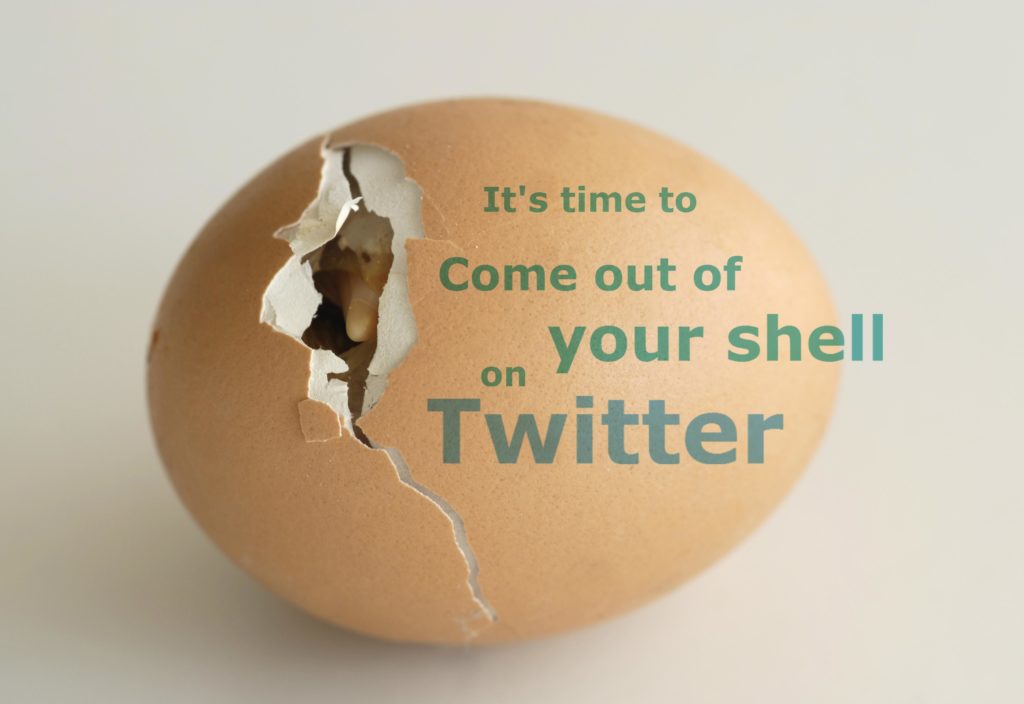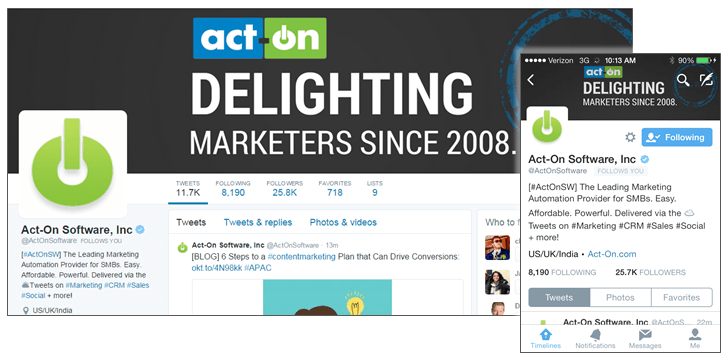 Are you spending time on Twitter? I don’t mean reading everyone else’s posts. I’m talking about actually engaging with people, posting relevant tweets with images and calls to action, favoriting, reweeting, and following like-minded marketers and relevant companies. Because if you’re not, you’re not alone – according to Rocket Post, only about half of the people who log in to Twitter once a month actually take the time to tweet.
Are you spending time on Twitter? I don’t mean reading everyone else’s posts. I’m talking about actually engaging with people, posting relevant tweets with images and calls to action, favoriting, reweeting, and following like-minded marketers and relevant companies. Because if you’re not, you’re not alone – according to Rocket Post, only about half of the people who log in to Twitter once a month actually take the time to tweet.
I’m not surprised to hear it. For years, I was a Twitter lurker, and it took me a long time to get comfortable diving in. And yes, I’m still learning something new every day. For example, when I first got started on Twitter, I didn’t realize that putting the @ sign at the beginning of a tweet would make it only appear on the page of the handle’s owner. So this tweet: “@ActOnSW has released a new #CaseStudy about @Mikogo! Check it out: https://bit.ly/1yrv0Gy” would only show up on Act-On’s page… not anywhere else. Whoops. #TheMoreYouKnow.
As a writer, I was also resistant to using “text speak.” Why? Bcuz u hav 2 tok lik u r a #RansomNote. Fortunately for me, Twitter best practices suggest that you should write clearly, completely, and avoid text-type abbreviations like LOL or YOLO, especially for B2B audiences. It’s possible (and preferable) to keep copy short and to the point without relying on truncated words to get your message across.
Like many marketers, I took the plunge because I realized that in today’s tweeting times, we just can’t afford to ignore this rapidly expanding channel. It’s a fantastic way to get your brand in front of prospects and to start to build their trust. And it’s also a fun challenge for writers – can you really distill your meaning down to a few words? Like writing haiku, the shorter the text, the harder it is to make it meaningful, compelling, and yes, even witty. (I’m still working on that, too. Follow me at @PirateLisa to see what I mean.)
The Revolution Will be Tweeted
If you’re waiting for Twitter to reach the tipping point, you’re already behind the times. Consider these facts from the Small Business Customer Insights Study from Twitter and research firm DB5:
- 60% of Twitter users say they’ve made a purchase based on something they saw on Twitter.
- 81% of followers are more likely to take action on information shared via Twitter.
- 85% of Twitter users say they feel more connected to small and medium-sized businesses after following them on Twitter.
And think about this: According to Twitter, there are currently 284 million monthly active users out there sending 500 million tweets are sent per day. Clearly, if you’ve been putting off diving in, you could be missing out.
Whether you’re just getting started, or you’re already well on your way but you need some power-user pointers, this new Act-On eBook, 10 Things Marketers Should be Doing on Twitter, has you covered. You’ll find a lot of valuable tips to help you connect with prospects and customers on Twitter. Here’s a sneak preview of what’s inside.
Basic Twitter Vocabulary
When you’re starting anything new, whether it’s learning to play the guitar, joining a yoga class, or setting up an email marketing campaign, there’s often a steep learning curve. A lot of that has to do with the specialized terminology used in various disciplines use to explain what’s going on. What’s a bar chord? An asana? A bounce rate? Beginners need to know the basic words and phrases before advancing to the next level.
So let’s start with overview of the most common Twitter terms:
- Tweet: A short-form update of 140 characters or less. And here’s a tip: You can write a tweet that’s exactly 140 characters, but if someone retweets it, part of the original will get cut off.
- Retweet: This is a tweet you forward to your followers. You can hit the retweet button on Twitter to do this, though you won’t be able to edit the original post. Or you can copy and paste to a new tweet, add your own words, and include “RT” or “via” to let people know you’re quoting someone else. For example, “I can’t wait to read this! RT @ActOnSW We just released a new #EmailMarketing eBook – https://bit.ly/1z6RNvh“.
- Mention: Naming someone in a tweet by using the @handle name convention. As I said before, be sure you don’t put the handle at the beginning if you want to share the mention with others.
- Hashtag: A word or phrase preceded by a pound symbol (#). They’re used to organize like tweets for search purposes. Learn more about using hashtags on Twitter.
- Follow: The process of subscribing to the tweets of a person or organization.
- Follower: A person or organization (with a Twitter account) that has subscribed to your tweets.
Check out this glossary for even more common symbols, words, and phrases related to Twitter. Once you have the lingo down, you’re ready to tweet. But before you do, you’ll want to take a close look at your profile page.
Your Twitter Brand Page
It’s important to make sure your brand’s profile page is ready for prime time. When prospects and customers decide to follow you, they’ll likely visit it, and it should look professional as well as interesting. Here’s a checklist of what you need for an eye-catching and yet informative brand page:
- Start with a good Twitter handle. Make it as short and simple as possible, while still keeping to your brand name. Try to make it easy to spell, without special characters (like how @ActOnSW leaves out the dash), and memorable without seeming silly (unlike, ahem, @PirateLisa).
- Choose the simplest possible form of your logo. Preview what it looks like when it’s displayed on a cell phone.
- Add a header image: Use a high-resolution picture that really represents your brand.
- Write a memorable description: Your description should be an elevator speech with some high-caliber keywords sprinkled in
- Choose a color scheme that matches your company colors. Whatever you do, don’t leave a default Twitter theme in place – it can make you look like an amateur.
Be sure to look at your brand page in a number of different browsers, and on various desktop and mobile devices. Make sure the profile photo doesn’t obscure any important text or graphic elements in the header image, and make everything is readable (and looks good) on a variety of mobile devices.
 Ready to go beyond the Twitter basics? Want more tips for building your brand – and your business results – on Twitter? Read the eBook, 10 Things Marketers Should be Doing on Twitter, to get basic tips for success as well as advanced techniques for integrating Twitter into your marketing strategy.
Ready to go beyond the Twitter basics? Want more tips for building your brand – and your business results – on Twitter? Read the eBook, 10 Things Marketers Should be Doing on Twitter, to get basic tips for success as well as advanced techniques for integrating Twitter into your marketing strategy.

